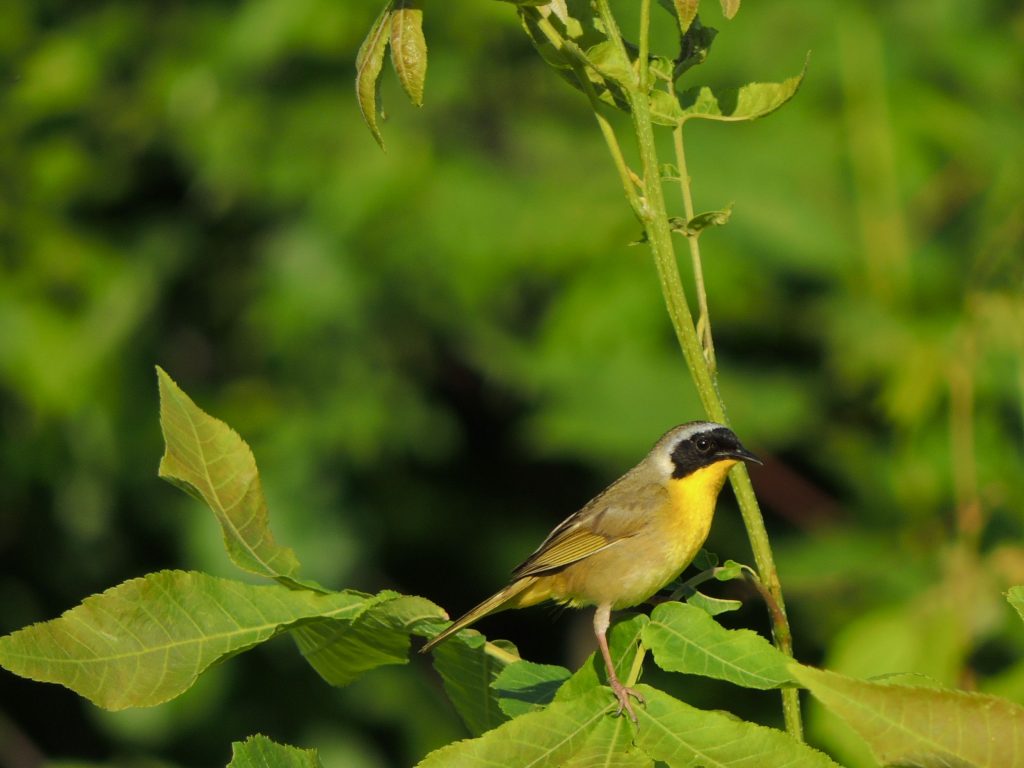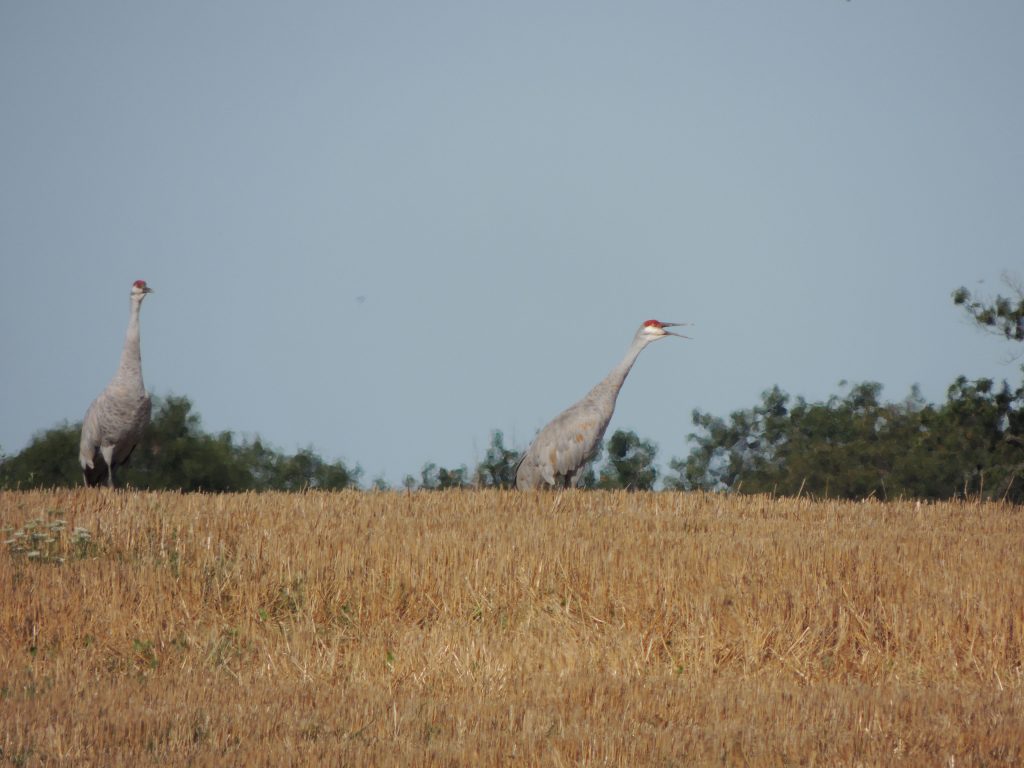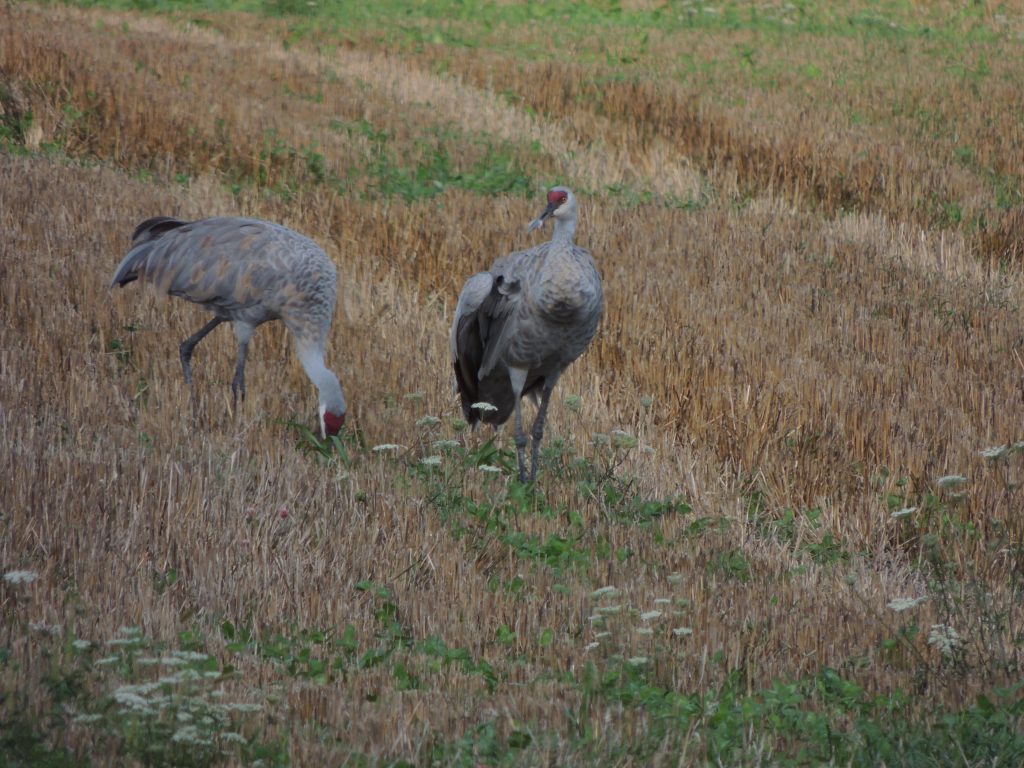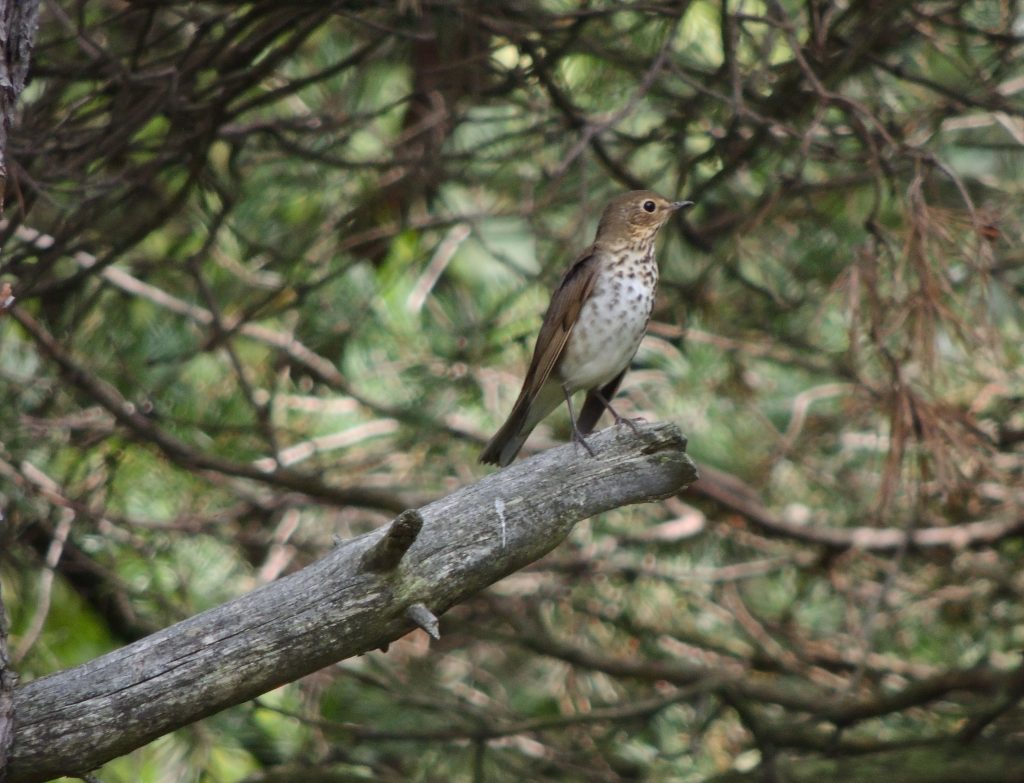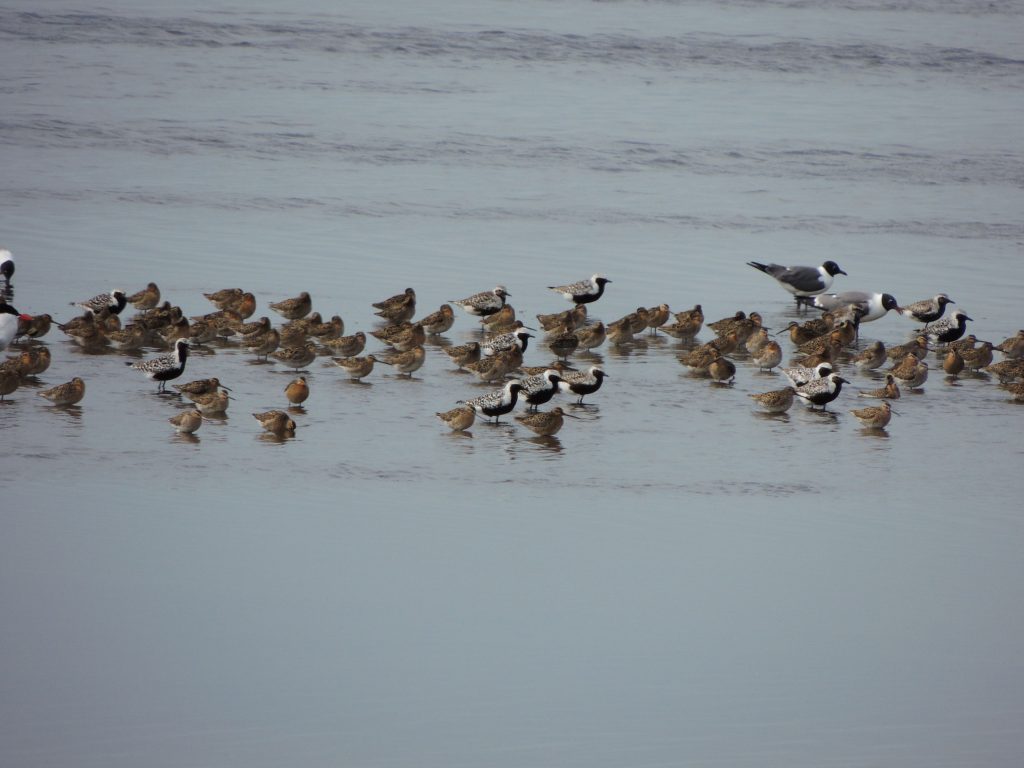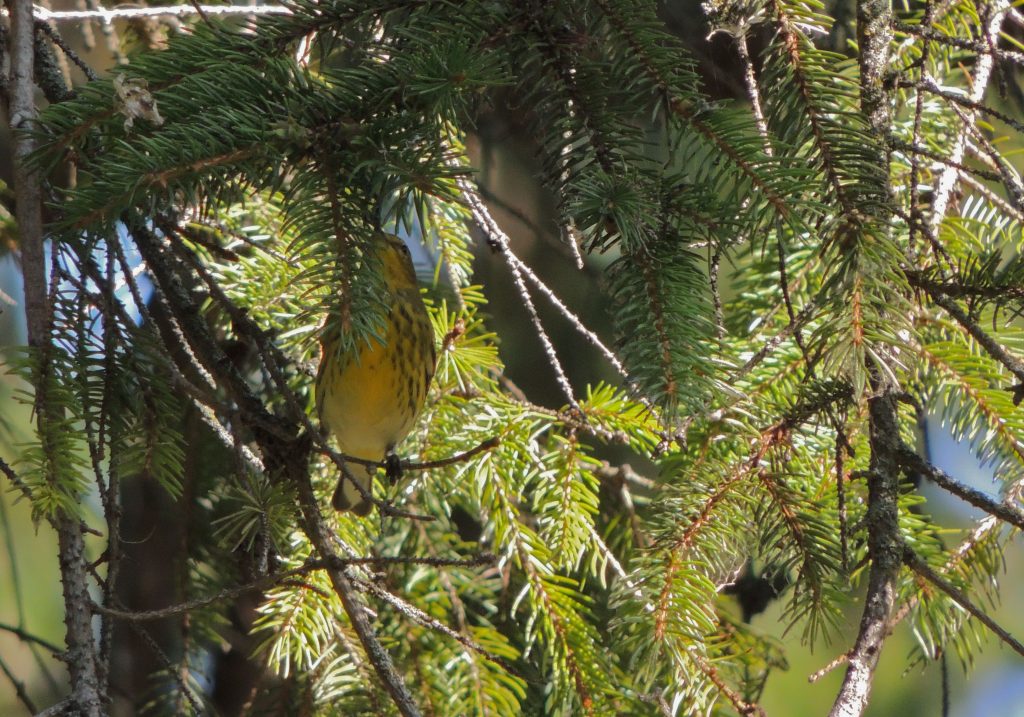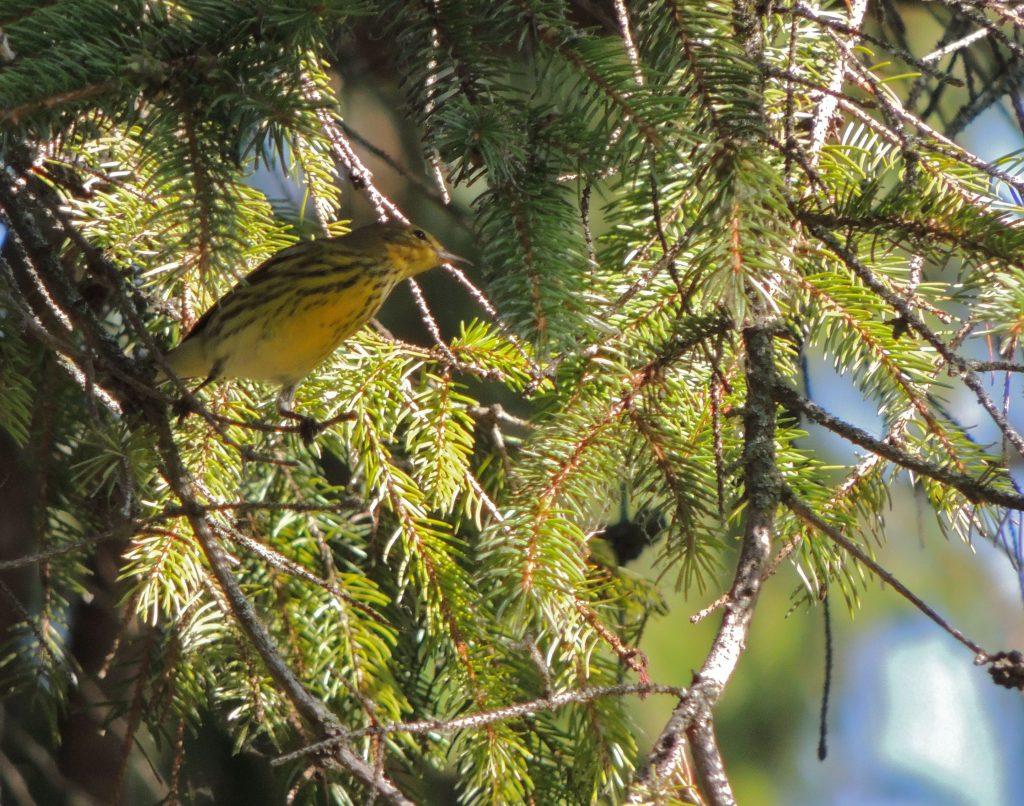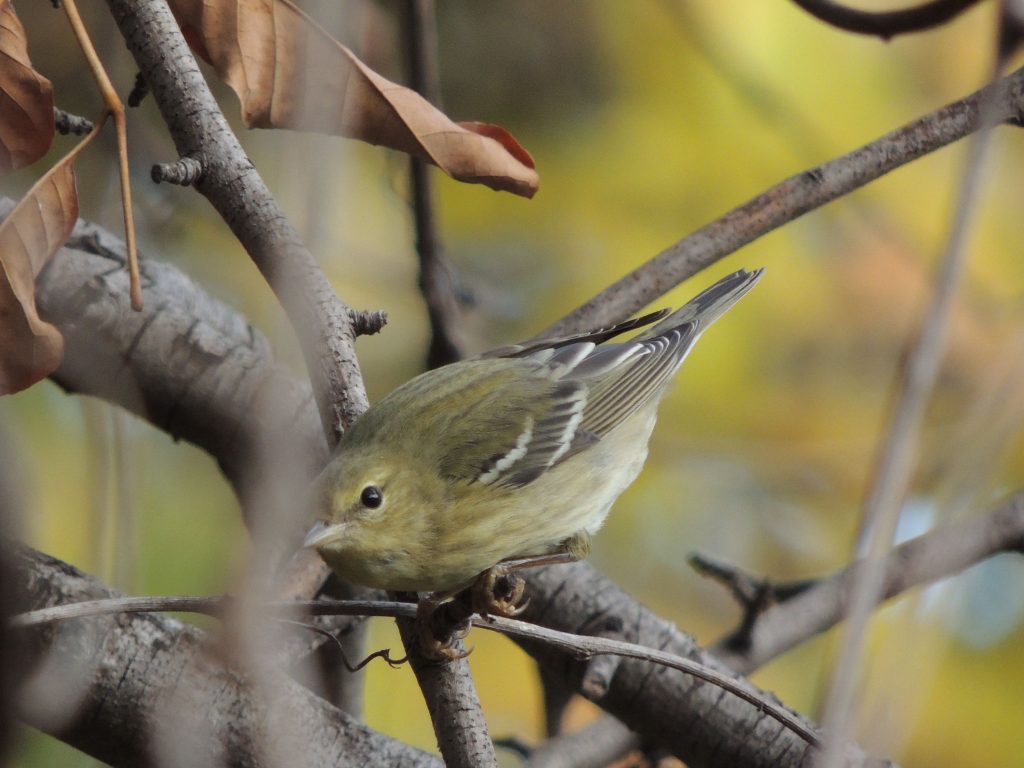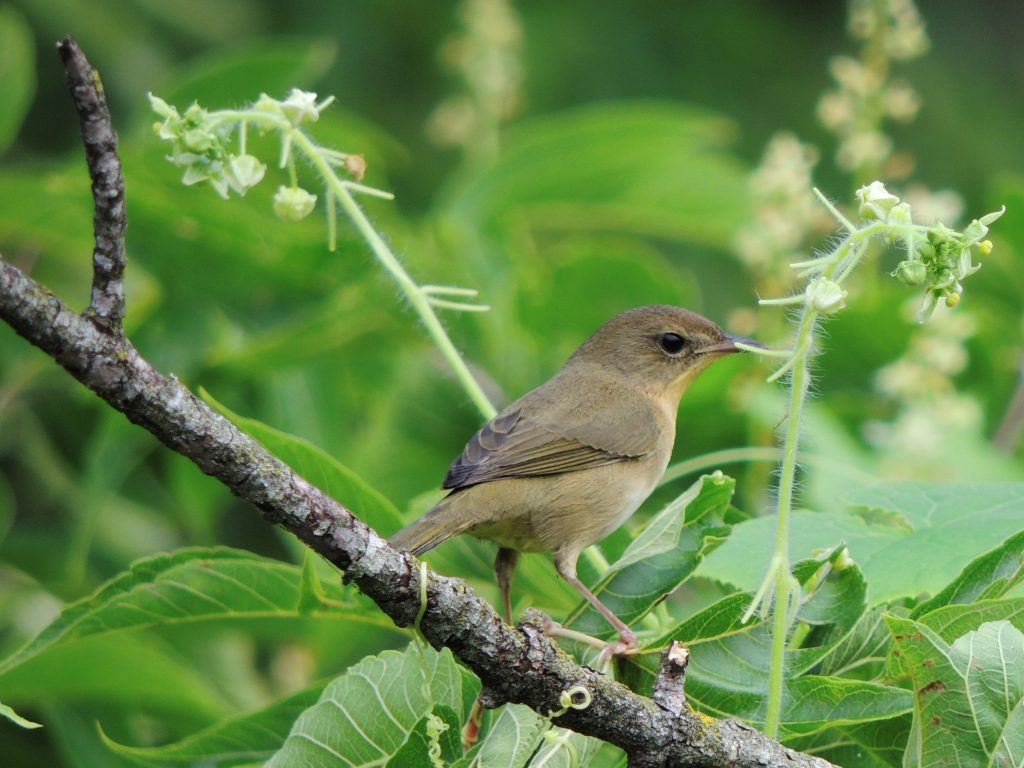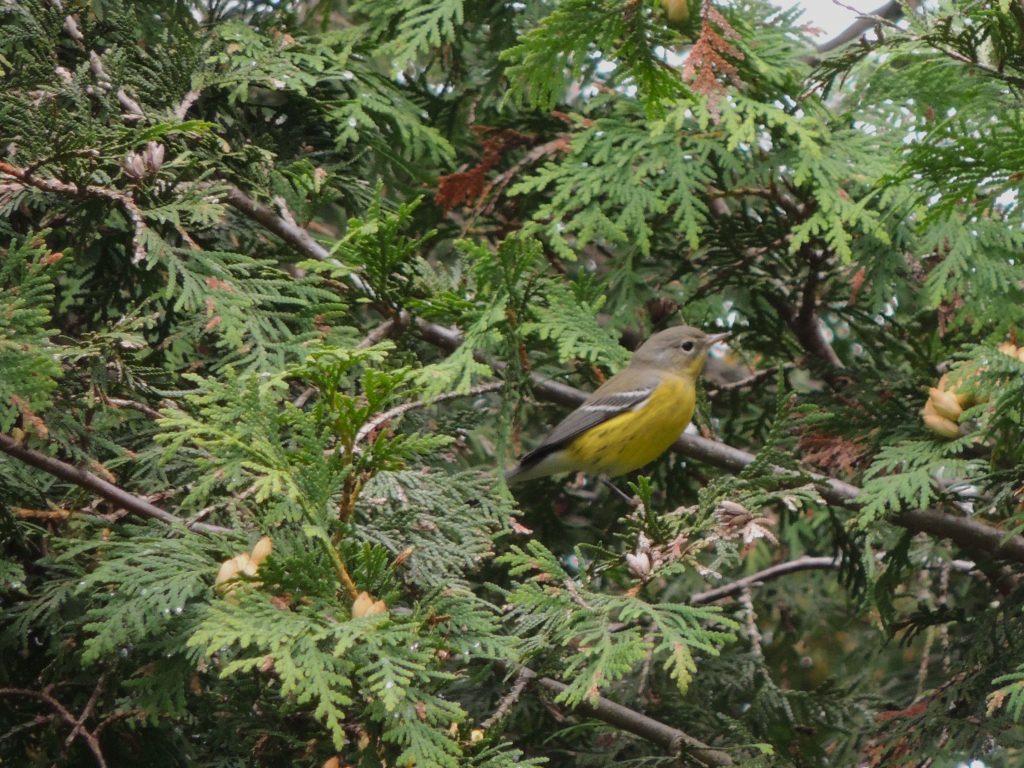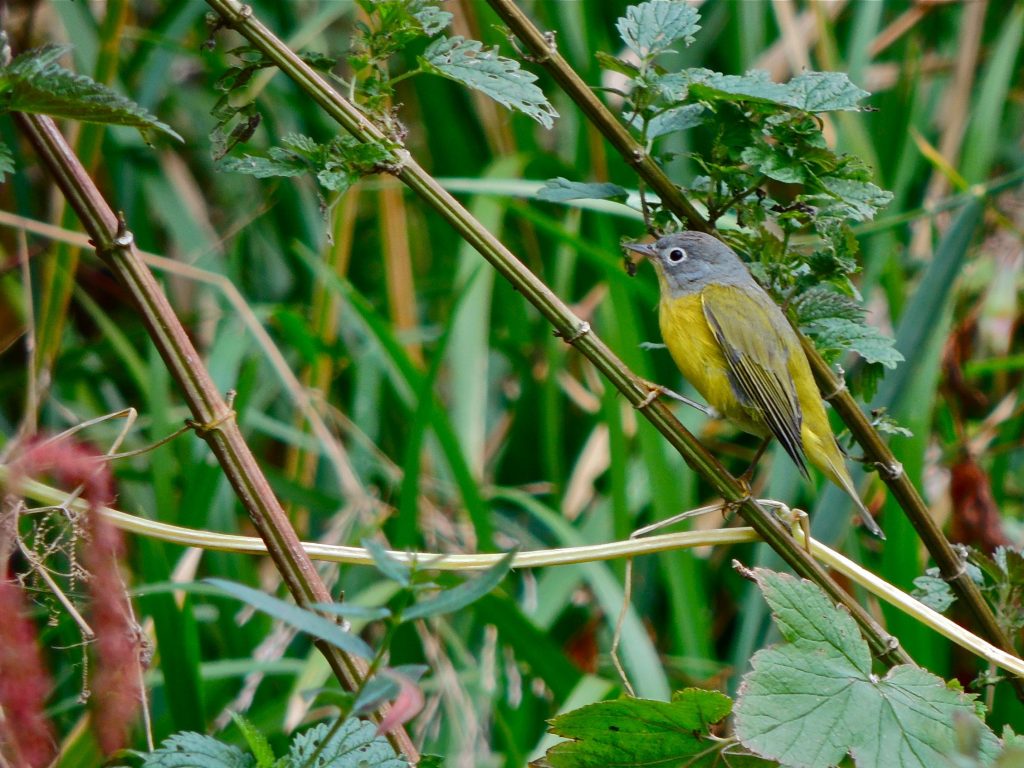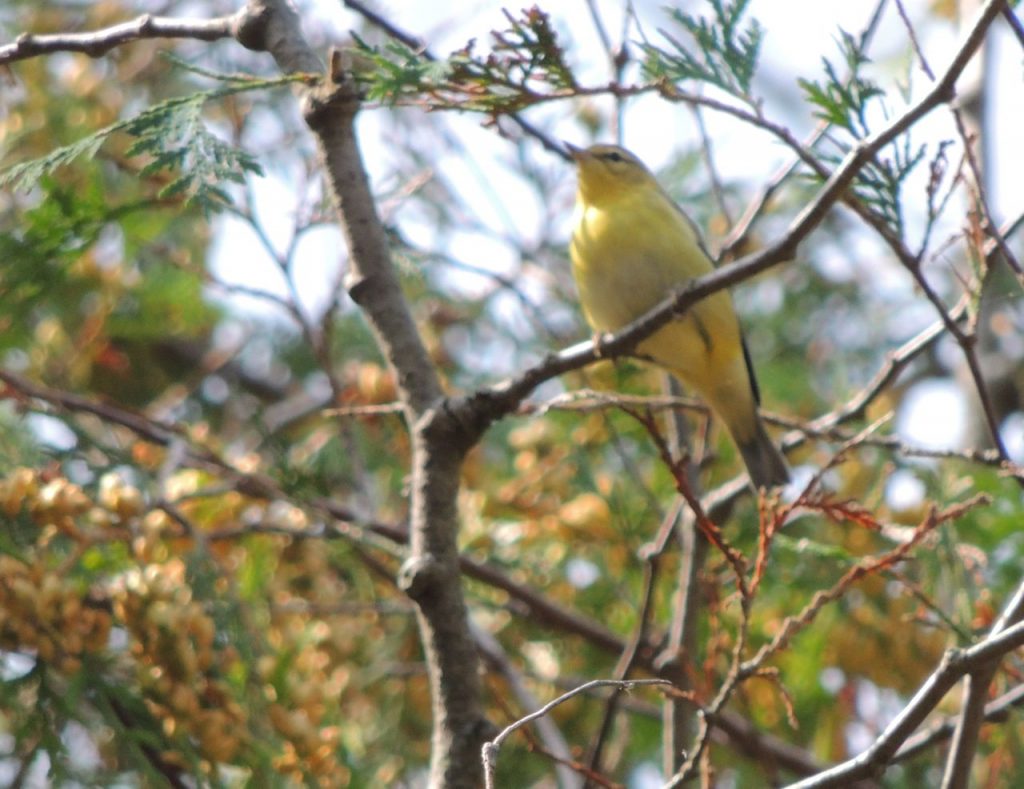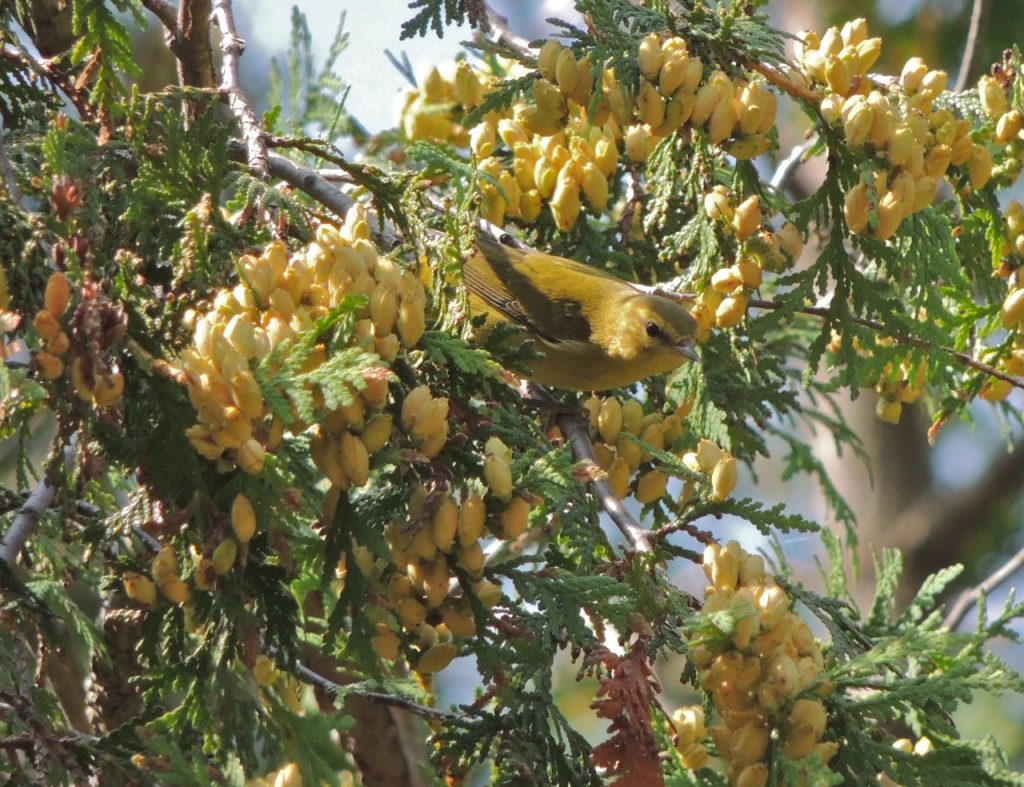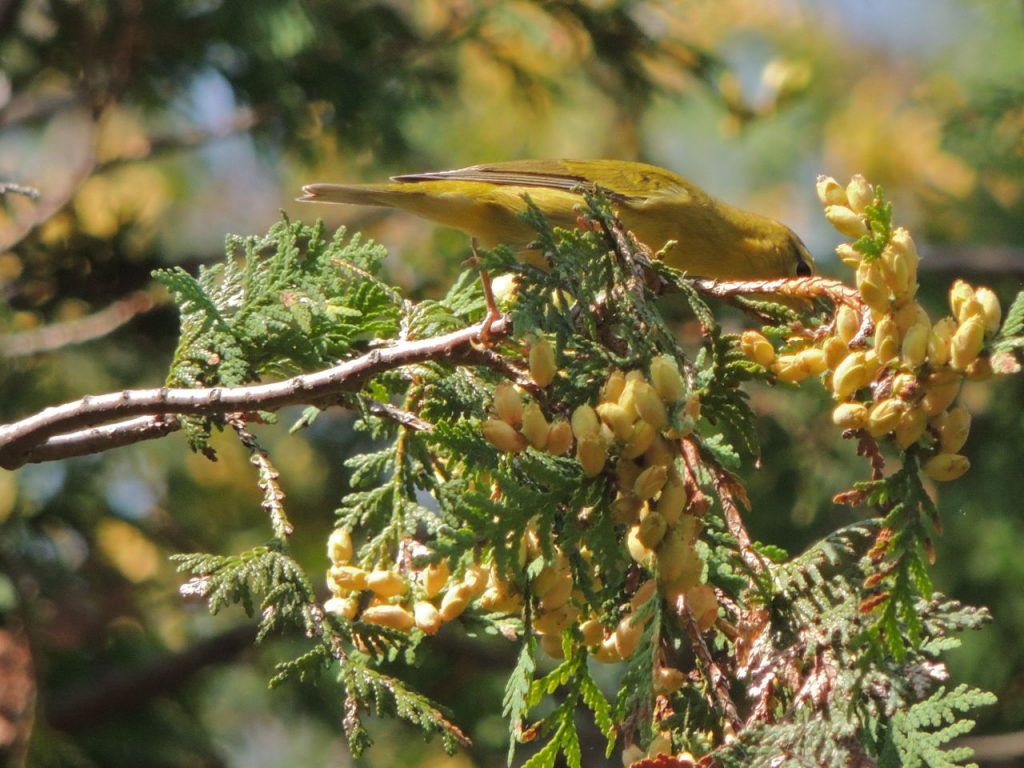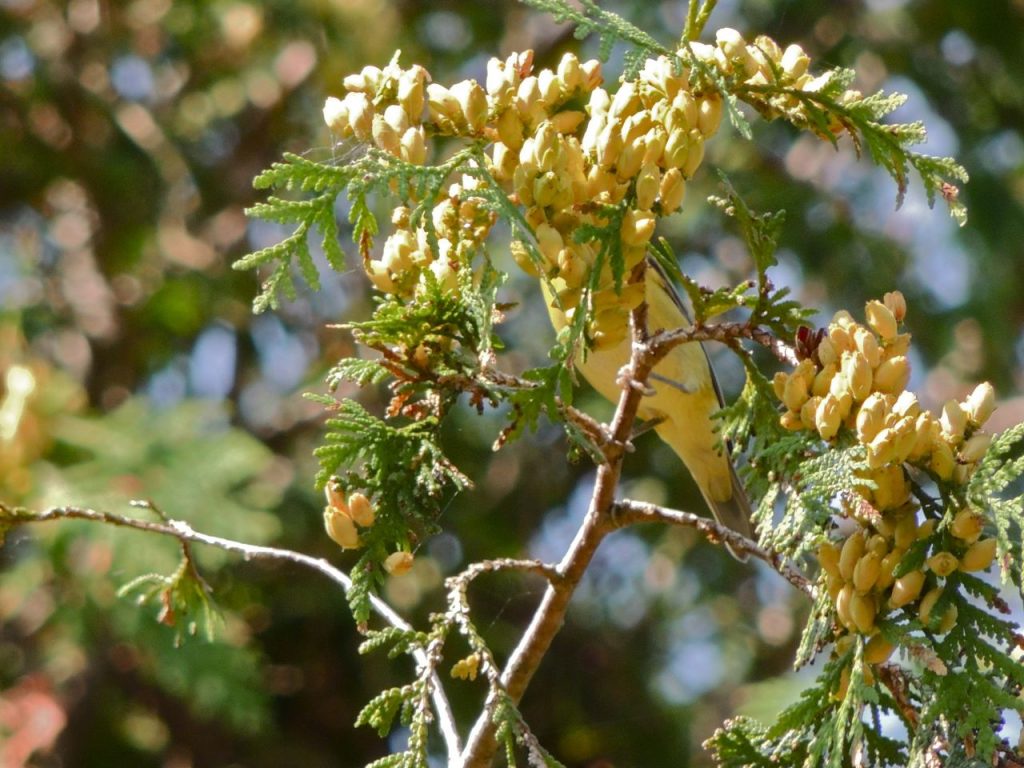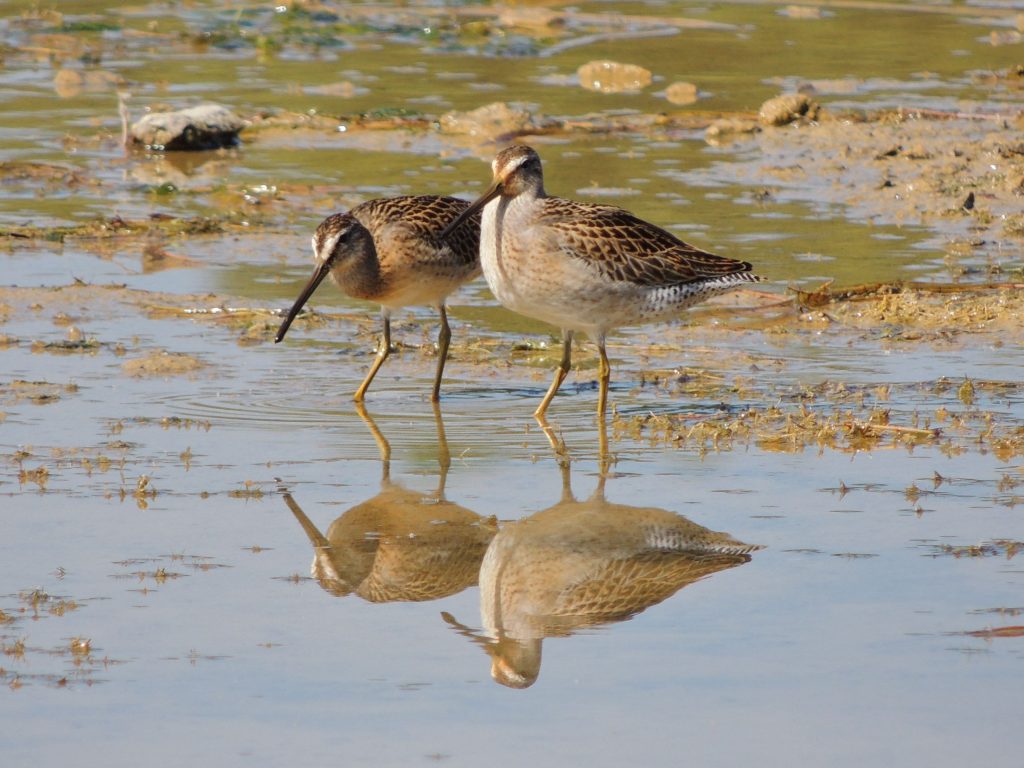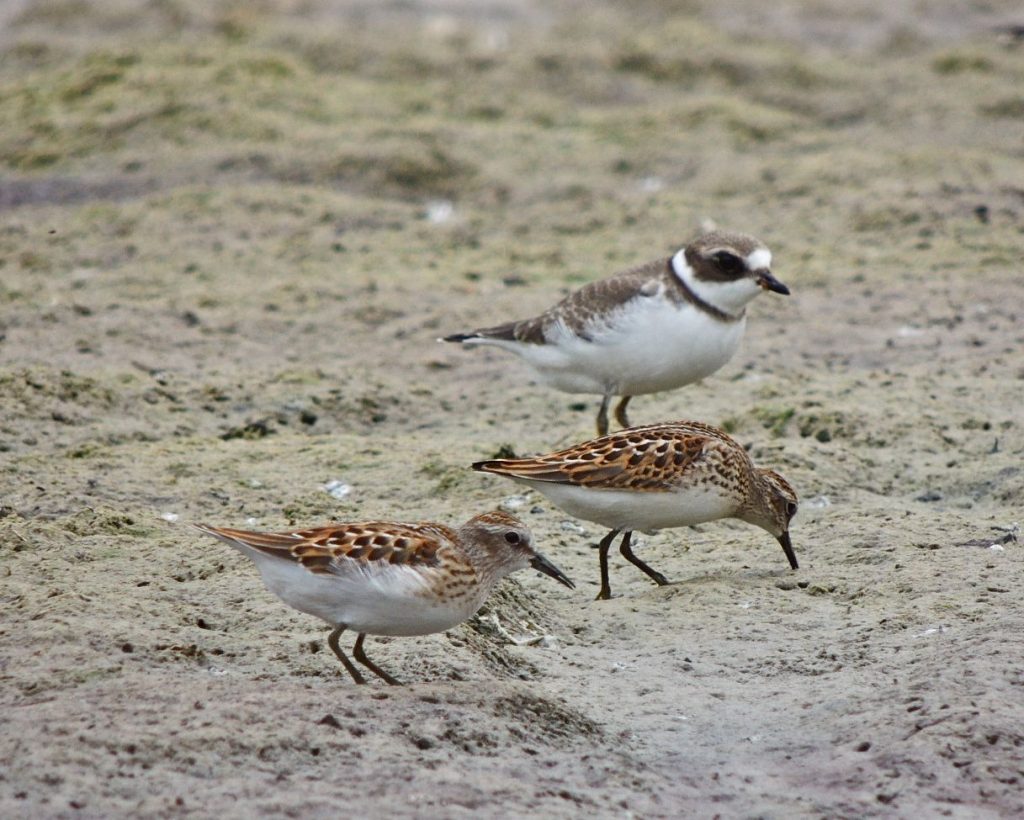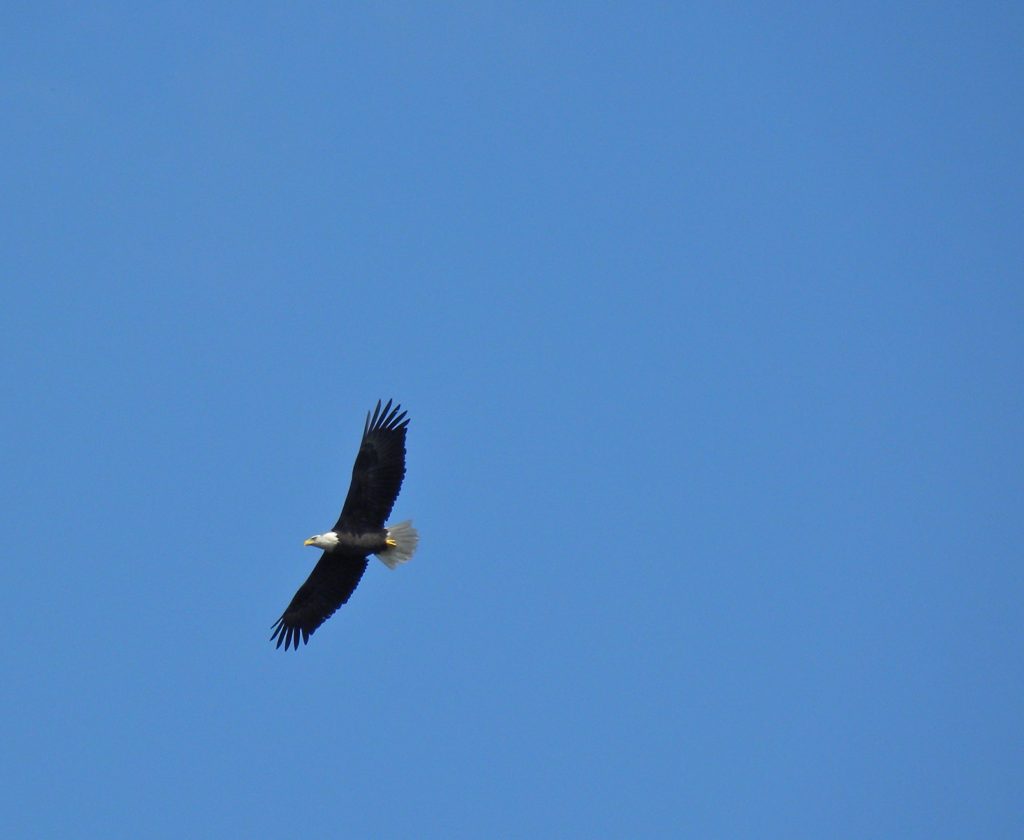September 10th 2017. RBG Hendrie Valley, Burlington, ON. The vireos are on the move, Red-eyed, Warbling and Philadelphia, all heading south. I’m sad to see them go, but it’s time and birding would only be half the fun if we didn’t have the ebb and flow of migrants in their varying seasonal plumages. In the valley there were lots of vireos in what seemed to be small groups, I think though it could well have been a mass movement and I was just seeing several whenever I stopped to look.
It wasn’t only vireos; the valley was busy with birds (and Sunday strollers). Obvious migrants included Swainson’s Thrushes, American Redstarts, Rose–breasted Grosbeaks and a pair of Scarlet Tanagers, the male now dressed in olive green rather than the fiery scarlet of spring and summer. Few birds stay still long enough to allow me a good photo, for every one photo I post dozens are discarded. But today a pair of vireos was moving slowly enough for me to get at least one decent shot.
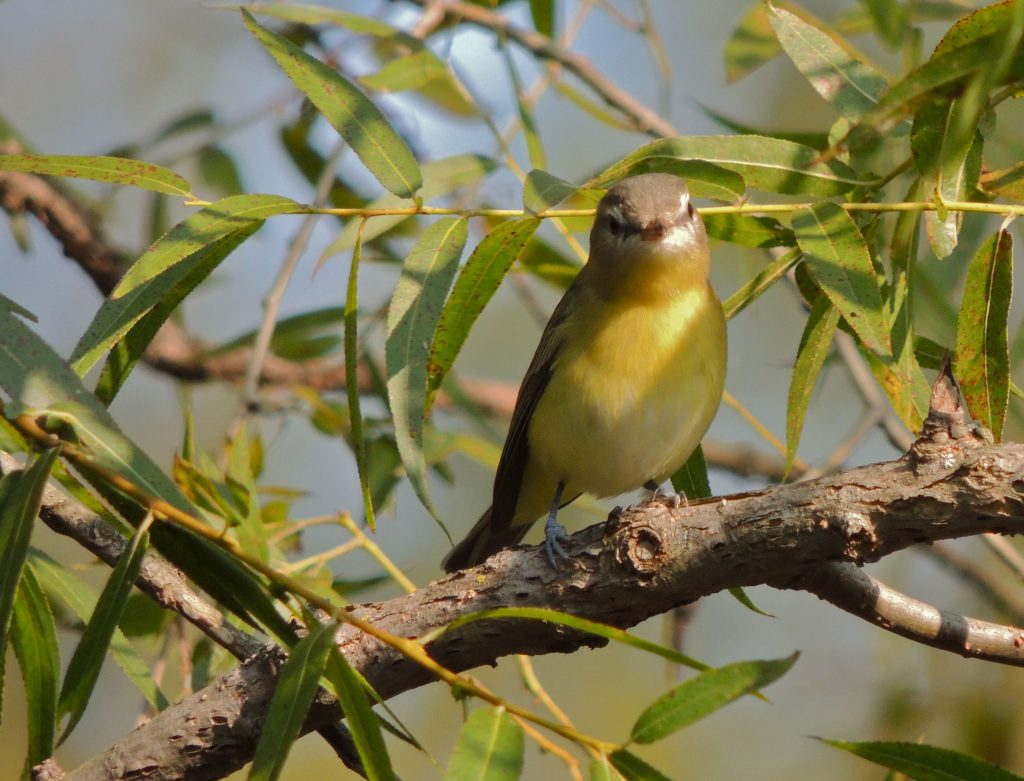
I have to admit that I was surprised to see I’d photographed a Philadelphia Vireo and not a Red-eyed Vireo as I had assumed. While they are quite similar my pride had assured me I knew the difference, the Philly is a bit smaller and distinctly washed yellow below, but somehow I’d missed the cues. It doesn’t matter, I’m happy to have a decent picture of a Philadelphia Vireo and it was my bird of the day.
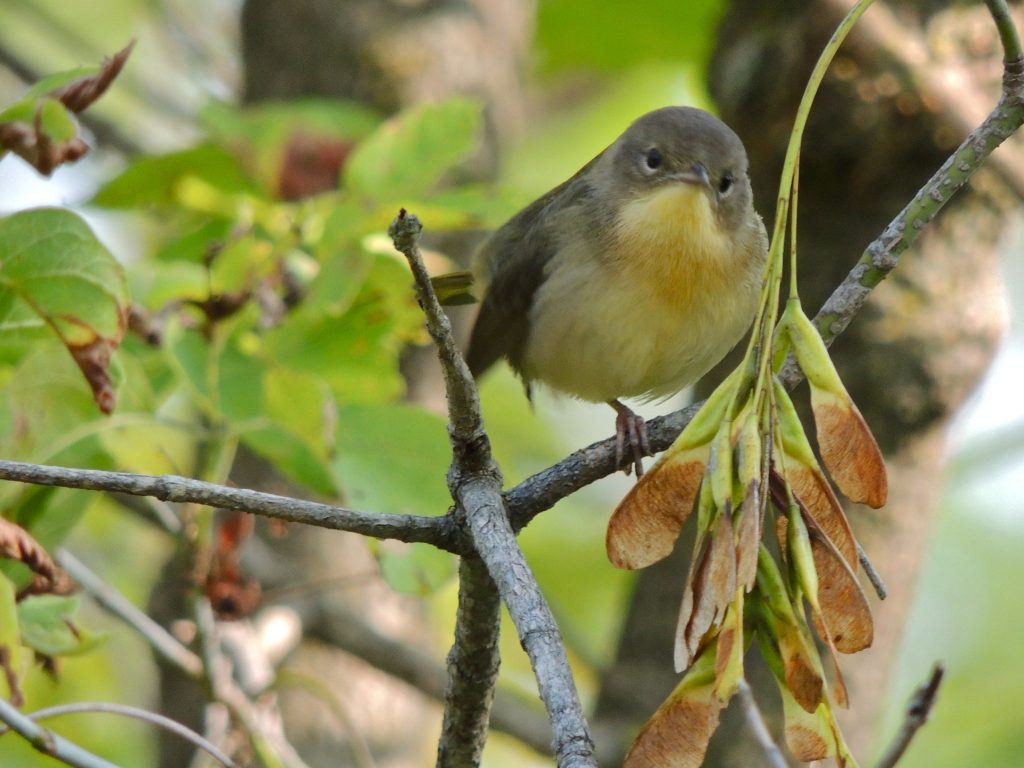
There were many Common Yellowthroats too. The adult males of the species with their bold Lone Ranger mask are unmistakable all year, but the females and juveniles are much subtler. Here, above, is one from today showing a yellow throat as you might expect but little else to make it an easy identification. Their damp habitat behaviour and rather flinty chip note helps with identification but I have to say there’s lots of room for mistakes.
